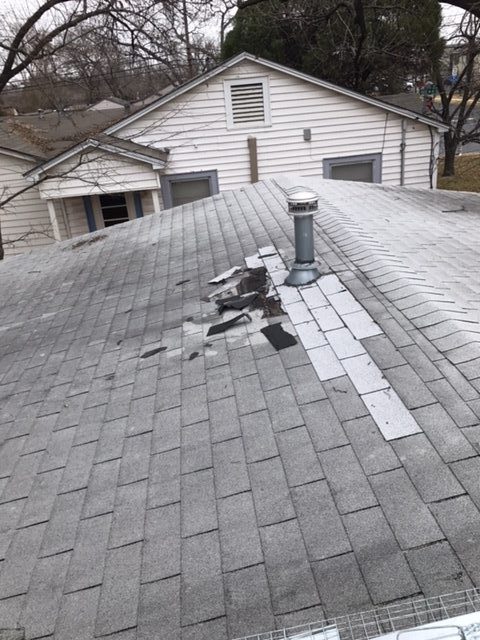


 Only the best baits are used for trapping
Only the best baits are used for trapping


Raccoons
![]() Well it’s that time of year again. As it gets cooler the raccoons and possums will be looking for a comfortable, warm, safe environment. Guess what? Your attic or crawlspace is the perfect home!!
Well it’s that time of year again. As it gets cooler the raccoons and possums will be looking for a comfortable, warm, safe environment. Guess what? Your attic or crawlspace is the perfect home!!
It’s important to check your attic and crawlspace openings before this happens. Doing a yearly inspection and closing off possible openings will save money, frustration and sleepless nights.
Raccoons (Procyon lotor) is a stocky mammal about 2 – 3 feet long weighing 10 – 50 pounds. It has a distinctive black “mask” over the eyes and a heavily furred, ringed tail. The animal is a salt-and-pepper gray with black above, some individuals are strongly washed with yellow.
Raccoons are omnivorous, eating both plants and animal foods. Plant foods include fruits, berries, nuts, acorns and various grains. Animal foods are crayfish, clams, fish frogs, snails, insects, turtles, all forms of eggs, various rodents and even bunnies. Racoons do not always wash their food before eating, this is a myth, often they do play with their food in the water. They also enjoy whatever food may be in your garbage can or your pets food bowl.
Raccoons generally breed in February or March, but matings may occur from december through June, depending on the lattitude. They gestate for about 63 days. While most litters are born in April or, May, if the females bred late they may not give birth until August. One litter of young is raised per year and litter size can be up to 5. Young raccoons are weaned between 2 and 4 months of age. The kits usually stay with the mother for the first year then gradually seperate during the spring.
How far can Raccoons range you ask. Well the males territory is between 3 – 20 square miles while the female ususally stays within 1 – 6 square miles. Racoons do not “hibernate”, but they do “hole up” during severe winter weather. Down here they may be inactive only a day or two at a time. Raccoons like to make dens in chimneys, roofs and attics and often gain entry through most common building materials (e.g. wood, soffit, aluminum, shingles and flashing. They have discovered that uncapped chimneys make excellent dens. They have very manipulative paws and can open jars, garbage cans, pry up vents and even open doors. They are nocturnal and make quite a racket when homeowners are trying to sleep.
Raccoons will get in your attic or crawlspace and chew/ tear up your ductwork, insulation, wiring etc. and have been known to get into the living area by digging through the ceiling or coming down through the hot water closet. This result of this activity are very expensive repairs and or replacement. They also leave their feces, urine and fleas behind when they depart.
There are a couple of health concerns with raccoons. Raccoons infected with rabies cannot always be disctinguished from healthy ones. Rabies is transmitted through saliva from an infected raccoon to humans and pets, often through a bite. Then of course there is the roundworm Baylisascaris in raccoon feces.
Baylisascaris is an intestnal raccoon roundworm that can infect a variety of other animals, including humans. The worms develop to maturity in the raccoon intestine, whee they produce millions of eggs that are passed int he feces. Released eggs take 2 – 4 weeks to become infective to other animals and humans. The eggs are resistant to most environmental conditions and with adequate moisture can survive for years.
People become infected when they accidentally ingest infective eggs in soil, water or on objects that have been contaminated with raccoon feces. When humans ingest these eggs, they hatch into larvae in the person’s intestines and travel throughout the body, affecting the organs and muscles. For more informaition on Baylisascaris go to www.cdc.gov/ncidod/dpd/parasites/baylisascaris/factsht_baylisascaris.htm
The most effective method to remove raccoons from inside your home is live trapping. If raccons are already in your home they have to be removed and then the openings must be sealed against further entry.

















